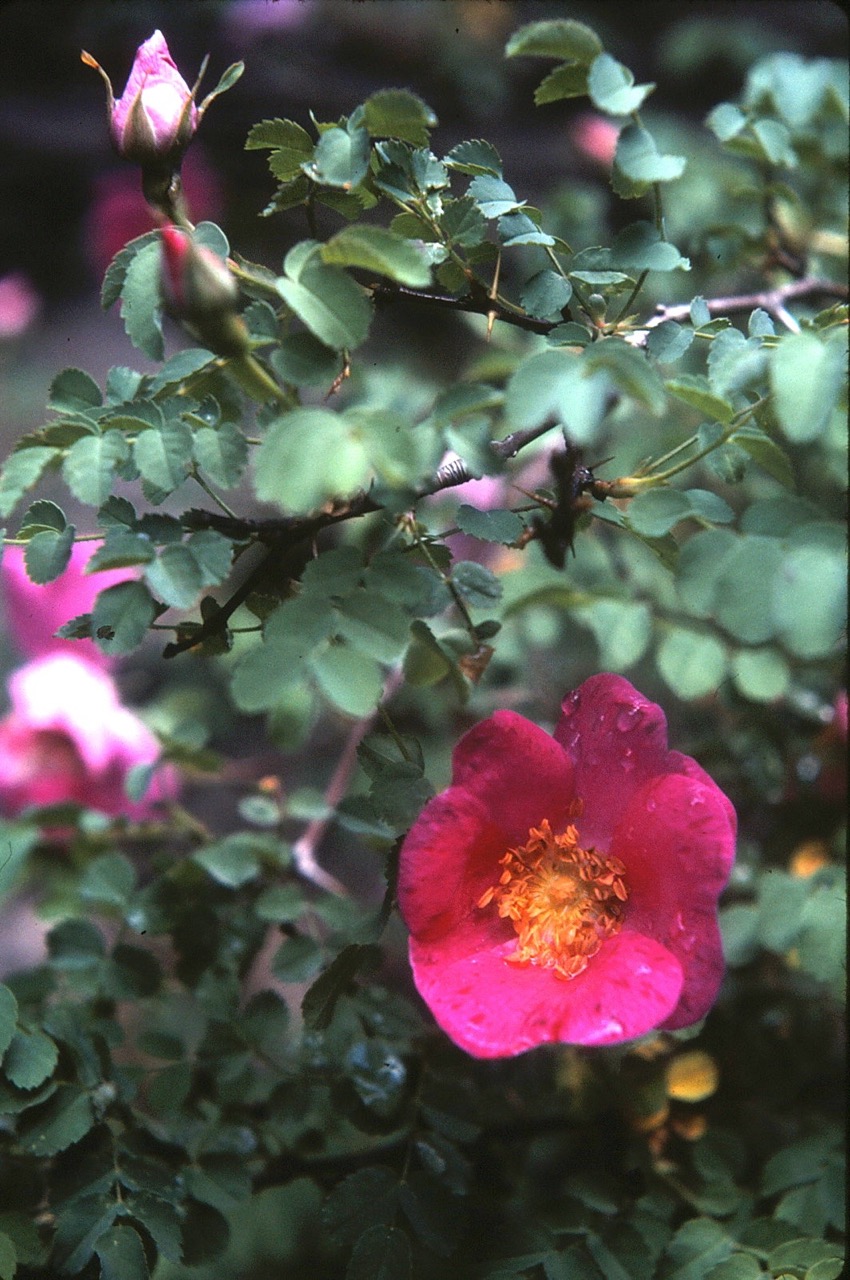Rosa webbiana
Credits
Article from Bean's Trees and Shrubs Hardy in the British Isles
Recommended citation
'Rosa webbiana' from the website Trees and Shrubs Online (treesandshrubsonline.
Genus
Infraspecifics
Other taxa in genus
- Rosa acicularis
- Rosa × alba
- Rosa albertii
- Rosa anemoniflora
- Rosa arkansana
- Rosa arvensis
- Rosa banksiae
- Rosa beggeriana
- Rosa biebersteinii
- Rosa blanda
- Rosa bracteata
- Rosa brunonii
- Rosa californica
- Rosa canina
- Rosa carolina
- Rosa centifolia
- Rosa cerasocarpa
- Rosa chinensis
- Rosa corymbulosa
- Rosa damascena
- Rosa davidii
- Rosa 'Dupontii'
- Rosa ecae
- Rosa eglanteria
- Rosa elegantula
- Rosa elymaitica
- Rosa fedtschenkoana
- Rosa filipes
- Rosa foetida
- Rosa foliolosa
- Rosa × fortuniana
- Rosa × francofurtana
- Rosa gallica
- Rosa gigantea
- Rosa glauca
- Rosa glutinosa
- Rosa gymnocarpa
- Rosa × harisonii
- Rosa helenae
- Rosa hemisphaerica
- Rosa × hibernica
- Rosa hugonis
- Rosa × involuta
- Rosa jundzillii
- Rosa laevigata
- Rosa longicuspis
- Rosa 'Macrantha'
- Rosa macrophylla
- Rosa majalis
- Rosa maximowicziana
- Rosa moyesii
- Rosa mulliganii
- Rosa multibracteata
- Rosa multiflora
- Rosa nitida
- Rosa nutkana
- Rosa palustris
- Rosa pendulina
- Rosa persica
- Rosa pimpinellifolia
- Rosa pisocarpa
- Rosa × polliniana
- Rosa prattii
- Rosa pulverulenta
- Rosa × reclinata
- Rosa × reversa
- Rosa × richardii
- Rosa roxburghii
- Rosa rubiginosa
- Rosa rubus
- Rosa rugosa
- Rosa sempervirens
- Rosa sericea
- Rosa setigera
- Rosa setipoda
- Rosa sicula
- Rosa soulieana
- Rosa stellata
- Rosa tomentosa
- Rosa villosa
- Rosa virginiana
- Rosa 'Watsoniana'
- Rosa wichuraiana
- Rosa willmottiae
- Rosa xanthina
A shrub up to 8 ft high in the wild, but often half that height or less; branches armed with straight, slender yellowish prickles abruptly widened at the base, up to 1⁄2 in. long; on strong shoots the prickles may be very densely arranged and variable in size, though all of essentially the same form, the largest with enlarged, pad-like bases; flowering branchlets unarmed or with prickles like those of the branches, but shorter. Leaves 1 to 3 in. long, with five to nine leaflets; rachis glandular or not, usually unarmed. Leaflets broadly elliptic, obovate or roundish, 3⁄8 to 1 in. long, obtuse or truncate at the apex, cuneate to rounded at the base, simply toothed, usually entire in the lower third, somewhat glaucous above, pale and glabrous or slightly downy beneath. Flowers solitary on short laterals in May, 11⁄2 to 2 in. wide, pale pink or white, or sometimes white in the centre shading to pink at the margin. Pedicels 3⁄8 to 1⁄2 in. long, sometimes slightly longer, they and the receptacles smooth or glandular-bristly. Sepals entire, glandular on the back, sometimes expanded at the apex. Fruits pitcher-shaped or globular, constricted at the apex, bright red, crowned by the persistent sepals.
Native of the central and western Himalaya, where it seems to be mainly confined to the drier inner valleys; also of Afghanistan, Tibet and parts of Russian Central Asia; the earliest recorded introduction to Kew was from Ladakh in 1879. The true species seems to be rare in cultivation (1979); see also R. sertata below.
R bella Rehd. & Wils
This species, said to be widely distributed in N. China, is included in R. webbiana by Boulenger. It was described from plants raised at the Arnold Arboretum from seeds collected by William Purdom in Shansi, and introduced by him to the USA, but is scarcely known in this country, even from herbarium specimens. Plants grown as R. bella do not agree well with the original description and are of uncertain identity.R sertata Rolfe
Synonyms
R. webbiana sens . Boulenger, in part
var. microphylla Crép.
Synonyms
R. nanothamnus Boulenger

